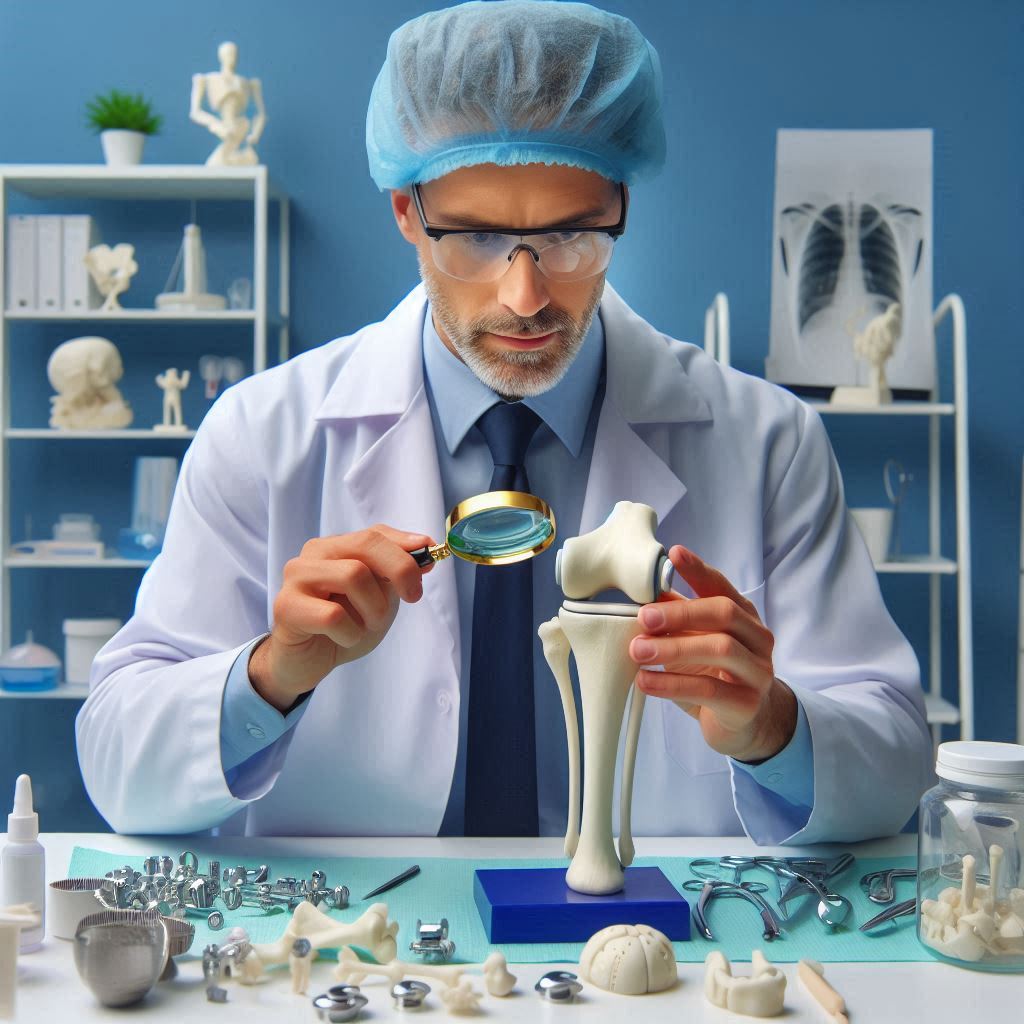Introduction
A sleep technologist plays a pivotal role in the healthcare field by specializing in monitoring and analyzing sleep patterns to diagnose and treat a variety of sleep disorders.
These disorders can range from common issues like sleep apnea and insomnia to more complex conditions such as narcolepsy and restless legs syndrome.
They ensure patients receive accurate assessments and effective treatments tailored to specific needs, improving quality of life.
The importance of sleep technologists cannot be overstated in the realm of healthcare.
They significantly contribute to early detection of underdiagnosed sleep disorders impacting physical health, mental well-being, and productivity.
Sleep technologists use advanced diagnostic equipment to monitor brain waves, heart rate variability, and respiratory patterns during overnight sleep studies.
They evaluate sleep architecture, identify disruptions or abnormalities, and provide detailed reports assisting physicians in treatment decisions.
Throughout this blog, we will delve into the daily routines and responsibilities of sleep technologists, exploring the challenges they face and the rewards they reap in their critical role.
Morning Routine
Arriving at Work and Preparing for the Day
The day begins early for dedicated sleep technologists, typically arriving before patient appointments commence.
They use this time to gather essential equipment and materials needed for the day ahead.
This includes ensuring all monitoring devices are calibrated and ready for precise data collection during sleep studies.
Reviewing Patient Schedules and Appointments
With equipment prepared, sleep technologists meticulously review the day’s patient schedules and appointments.
This step is critical for organizing their workload efficiently.
By understanding the schedule in advance, technologists can allocate sufficient time for each patient, ensuring thorough preparation and attentive care during sleep study sessions.
Setting Up Equipment and Testing Rooms for Sleep Studies
Following schedule review, sleep technologists proceed to set up equipment and prepare testing rooms for the scheduled sleep studies.
This involves methodically placing electrodes and sensors on patients, configuring monitoring devices, and conducting thorough checks to verify equipment functionality.
Adjustments to room settings are also made to create a comfortable and conducive environment for optimal sleep conditions.
Effective communication remains integral throughout the morning routine.
Sleep technologists collaborate closely with colleagues, including fellow technologists and nursing staff, to coordinate activities and address any logistical or technical challenges that may arise.
This teamwork ensures a streamlined workflow and enhances overall patient care delivery.
Patient-focused care begins from the initial setup phase.
Technologists prioritize establishing a welcoming atmosphere for patients, ensuring they feel informed and relaxed about the upcoming sleep study.
This includes providing clear explanations of the monitoring process, addressing patient concerns, and adjusting room amenities to promote comfort and tranquility.
Attention to detail is paramount during equipment setup.
Sleep technologists meticulously verify the placement and functionality of electrodes and sensors to ensure accurate data collection throughout the sleep study.
Regular monitoring of equipment readings and patient responses allows technologists to make real-time adjustments as necessary, ensuring continuous and reliable data capture without disruption.
Patient Interaction
The day begins with sleep technologists meeting patients and thoroughly explaining the sleep study process.
This initial interaction is pivotal as it sets the foundation for establishing trust and ensuring patient cooperation throughout the study.
Technologists address patients’ questions or concerns, explaining the study’s purpose, procedure expectations, and equipment use.
Installing Monitoring Equipment and Ensuring Patient Comfort
Following the initial briefing, sleep technologists proceed to install monitoring equipment with meticulous attention to detail.
This process involves carefully positioning electrodes, sensors, and other monitoring devices on the patient’s body.
Technologists prioritize patient comfort throughout the setup, ensuring that the placement of equipment does not disrupt the patient’s ability to sleep comfortably.
Clear communication continues as technologists explain each step of the setup.
Ensuring patients understand the purpose of each device and how it will be used to monitor their sleep patterns and physiological responses.
Monitoring Patients Throughout the Night and Adjusting Equipment as Needed
Once the equipment is installed, the role of the sleep technologist transitions to continuous monitoring and adjustment throughout the night.
Technologists remain vigilant, observing patients via monitoring systems and making real-time adjustments to equipment settings as needed.
Maintaining data integrity and promptly addressing issues optimize patient comfort and ensure accurate sleep study data.
Patient interaction remains a focal point throughout the night.
Technologists maintain a compassionate and supportive demeanor, offering reassurance and responding promptly to any concerns that arise during the study.
This patient-centered approach not only enhances the overall experience for the patient but also contributes to the effectiveness of the sleep study by fostering a calm and cooperative atmosphere.
Ensuring patient comfort is paramount throughout the night.
Technologists regularly check on patients, making necessary adjustments to equipment settings to maximize comfort without compromising data quality.
This may involve repositioning sensors, adjusting airflow in the room, or providing additional support as needed to help patients relax and achieve optimal sleep conditions.
Read: Best Study Resources for Surgical Technologist Students
Data Analysis
Collecting Data During Sleep Studies
Each day as a sleep technologist begins with meticulous preparation.
I set up sensors and monitors on patients, ensuring each placement is precise and comfortable.
These devices track vital sleep metrics: breathing patterns, brain activity, and movements.
Throughout the night, they provide a continuous stream of data that is essential for understanding sleep quality and identifying potential disorders.
Adjusting sensors and monitors as needed ensures accurate data collection, laying the foundation for thorough analysis later on.
Analyzing Data to Identify Sleep Disorders and Abnormalities
Once the sleep study concludes, the core of my work commences: analyzing the amassed data.
I delve into graphs, charts, and recordings, searching for patterns that signify sleep disorders such as obstructive sleep apnea, restless legs syndrome, or parasomnias.
Each anomaly observed requires careful consideration, as it could hold clues to the underlying causes of the patient’s sleep disturbances.
By correlating different data points—like respiratory events, brain wave patterns, and movement during sleep—I can paint a detailed picture of the patient’s sleep architecture.
Documenting Findings and Preparing Reports for Physicians
Transforming complex data into coherent, actionable insights is a critical aspect of my role.
I meticulously document findings, summarizing sleep study results with clarity and precision.
Reports include detailed descriptions of sleep stages, disruptions observed, and their potential impact on the patient’s health.
Annotated graphs and comparative tables visually aid physicians, helping them make informed decisions about diagnosis and treatment plans.
Throughout this process, effective communication with healthcare professionals is paramount.
Discussing findings and recommendations ensures a collaborative approach to patient care.
Where insights from the sleep study are integrated into the broader context of the patient’s medical history and current health status.
The impact of accurate data analysis cannot be overstated. It directly influences the quality of patient care and treatment outcomes.
By documenting trends over time, we can track progress and evaluate the effectiveness of interventions, adjusting treatment plans as necessary to optimize sleep health and overall well-being.
Technology plays a pivotal role in enhancing data analysis capabilities.
Advanced software tools enable real-time monitoring during sleep studies, improving the accuracy and efficiency of data collection.
Staying updated with sleep medicine research and new technologies enhances my ability to diagnose various sleep disorders effectively.
It continually refines my analytical methods, ensuring they remain current and precise.
Read: Continuing Education for Surgical Technologists: Why It Matters
Transform Your Career Today
Unlock a personalized career strategy that drives real results. Get tailored advice and a roadmap designed just for you.
Start NowCollaborating with Physicians
As a sleep technologist, one of the key aspects of my role is collaborating with physicians to ensure the best possible care for our patients.
In this collaboration, technologists discuss patient results with sleep specialists, offer insights, recommend treatment plans, and adjust therapy as needed.
Discussing Patient Results with Sleep Specialists
- After conducting sleep studies and analyzing the data, I compile detailed reports on each patient’s sleep patterns and behaviors.
- These reports are then shared with sleep specialists, who review the information to make informed decisions about treatment.
- By communicating effectively with physicians, we can collectively determine the best course of action for each individual patient.
Offering Insights and Recommendations for Treatment Plans
- Based on the data collected during sleep studies, I provide valuable insights into the underlying issues affecting a patient’s sleep quality.
- I work closely with physicians to develop personalized treatment plans that address each patient’s specific needs and challenges.
- My recommendations often include lifestyle changes, behavioral therapies, and, in some cases, the use of sleep aids or devices.
Participating in Patient Follow-ups and Adjustments to Therapy
- Once a treatment plan is in place, I follow up with patients to monitor their progress and gather feedback on their experiences.
- Based on this feedback, I collaborate with physicians to make any necessary adjustments to therapy and ensure optimal outcomes for patients.
- This collaborative approach not only improves patient care but also allows for ongoing refinement of treatment strategies based on real-world results.
Overall, collaborating with physicians is a vital part of my role as a sleep technologist.
By working together as a team, we can provide comprehensive and individualized care to our patients, ultimately helping them achieve better sleep and improved quality of life.
Read: Interview Tips for Landing a Surgical Technologist Job

Professional Development
Attending Training Sessions and Workshops to Stay Current on Sleep Technology
Each day begins with sleep technologists attending training sessions and workshops dedicated to the latest advancements in sleep technology.
These educational opportunities cover a wide range of topics, including new diagnostic tools, innovative treatment approaches, and recent research findings in sleep medicine.
By actively participating in these sessions, technologists enhance their knowledge and stay updated on emerging trends that shape the field.
Pursuing Certification and Continuing Education Opportunities
A significant part of professional development for sleep technologists involves pursuing certification and engaging in continuing education.
Certification validates technologists’ expertise and adherence to industry standards, demonstrating their commitment to delivering high-quality care in sleep medicine.
Continuing education requirements ensure technologists maintain proficiency by staying informed about evolving practices, technologies, and treatments.
Sleep technologists improve skills through seminars, online courses, webinars, and conferences, enhancing patient outcomes via professional development.
Networking with Other Healthcare Professionals in the Field
Networking is essential for sleep technologists to build relationships, exchange knowledge, and collaborate with other healthcare professionals in the field of sleep medicine.
Technologists actively engage in professional associations, conferences, and interdisciplinary team meetings with physicians, researchers, psychologists, and specialists.
These interactions provide opportunities to discuss challenging cases, share best practices, and explore innovative approaches to patient care.
By connecting with peers and experts, technologists gain valuable insights, access to resources, and support in implementing effective treatment plans for patients with sleep disorders.
Attending training sessions and workshops is a proactive approach to staying informed about advancements in sleep technology.
These events expose technologists to new methodologies and equipment that enhance diagnostic accuracy and treatment efficacy.
Pursuing certification demonstrates technologists’ dedication to maintaining high standards of practice in sleep medicine.
It underscores their commitment to professional growth and proficiency in providing patient-centered care.
Continuing education ensures that technologists remain knowledgeable about current research and best practices in sleep medicine.
By continuously updating their skills, technologists can effectively address the complex needs of patients with sleep disorders and contribute to improved health outcomes.
Read: Surgical Technologist Job Outlook: Demand and Opportunities
Challenges and Rewards
Working as a sleep technologist involves navigating unique challenges and experiencing deeply rewarding moments that define the daily routine.
Challenges of Working Irregular Hours and Overnight Shifts
One of the significant challenges faced by sleep technologists is the requirement to work irregular hours and overnight shifts.
This schedule disrupts typical circadian rhythms and can lead to sleep deprivation and fatigue.
Adapting to nocturnal work patterns requires a commitment to self-care and lifestyle adjustments to maintain optimal performance and personal well-being.
Technologists often find themselves working during nighttime hours, which can pose challenges in balancing work responsibilities with family commitments and social engagements.
The irregularity of the schedule demands flexibility and resilience, as technologists must be prepared to adjust their sleep routines and daily activities accordingly.
The Rewarding Feeling of Helping Patients Improve Their Sleep Quality
Despite the challenges, sleep technologists derive immense satisfaction from their work, particularly in the positive impact they have on patients’ lives.
Helping individuals improve their sleep quality and overall health outcomes is a gratifying experience that reinforces the importance of their role in healthcare.
Witnessing firsthand the transformation in patients who previously struggled with sleep disorders is a powerful motivator for sleep technologists.
From diagnosing sleep apnea to implementing effective treatment plans, technologists play a crucial role in facilitating better sleep health and enhancing quality of life for their patients.
Sharing Personal Anecdotes and Experiences from the Job
Personal anecdotes from sleep technologists provide insight into the diverse experiences encountered on the job.
These stories often highlight moments of compassion, resilience, and human connection that define their professional journey.
Technologists calm anxious patients, collaborate with teams for care coordination, and celebrate treatment successes with patients.
These anecdotes underscore the interpersonal aspect of their work and the profound impact it has on patient care and outcomes.
Navigating the challenges of irregular work hours requires sleep technologists to prioritize their physical and mental well-being.
To cope with nocturnal shifts, technologists maintain sleep schedules, practice mindfulness, and foster supportive work environments.
Ultimately, the role of a sleep technologist is multifaceted, encompassing both challenges and rewards.
Sleep technologists demonstrate dedication and expertise by tackling irregular work hours and enhancing patients’ sleep quality.
Sleep technologists make a meaningful impact by sharing anecdotes and interacting with patients to advocate for better health outcomes.
Conclusion
As a sleep technologist, you play a crucial role in diagnosing and treating sleep disorders.
Your responsibilities include conducting sleep studies, analyzing data, and assisting patients throughout the process.
By ensuring the accuracy of results and providing recommendations for treatment, you contribute significantly to improving patient health and quality of life.
It’s essential to recognize the impact of your work on individuals’ well-being and the overall healthcare system.
Your expertise and dedication help patients better understand their sleep patterns and find effective solutions to their sleep problems.
Moreover, your role as a sleep technologist goes beyond the technical aspects of the job.
You also serve as a source of support and guidance for patients, offering comfort and reassurance during a vulnerable time.
For those interested in pursuing a career in sleep technology, it’s important to explore the field further and understand the opportunities it presents.
By continuing to learn and grow in this specialized area of healthcare, you can make a significant difference in the lives of those struggling with sleep disorders.
Overall, the field of sleep technology offers a rewarding and fulfilling career path for individuals passionate about improving sleep health and promoting overall well-being.
Consider exploring this field further and discovering the possibilities it holds for your future.
Transform Your Career Today
Unlock a personalized career strategy that drives real results. Get tailored advice and a roadmap designed just for you.
Start Now[E-Books for Sale]
The Big Book of 500 High-Paying Jobs in America: Unlock Your Earning Potential
$19.99 • 500 High-Paying Jobs • 330 pages
Explore 500 high-paying jobs in America and learn how to boost your career, earn more, and achieve success!
See All 500 High-Paying Jobs of this E-Book
1001 Professions Without a Degree: High-Paying American Jobs You Can Start Now
$19.99 • 1001 Professions Without a Degree • 174 pages
Discover 1001 high-paying jobs without a degree! Unlock career tips, skills, and success strategies for just $19.99!




